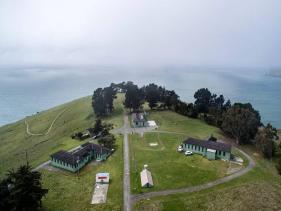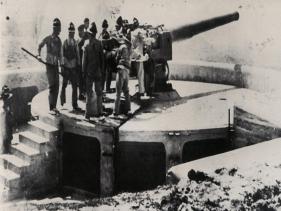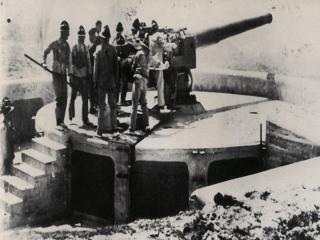The Godley Head WWII coastal defence battery sits atop sheer 120 metre-high cliffs. Built in 1939, it is ranked in the top ten New Zealand coastal defence heritage sites.
The Godley Head Battery and its associated camp remain one of the most intact and extensive examples of coastal defences erected around New Zealand in World War II.
Beginning with just two 60-pounder field guns sited on the headland in September 1939 and a small staff, the complex expanded through the war years as a regimental headquarters and defence community. By 1943 it was a complex unit, covering virtually every aspect of coastal defence operations, with accommodation and facilities provided for up to 410 personnel. Construction WAS finished in 1946.
The main significance of this complex relates to its World War II use. The site's strategic position had been recognised by Canterbury's early surveyors who had set it aside for defence purposes in1852 but no use had been made of it during the 'Russian scare' of the 1880s or during World War I.
The Godley Battery shut down for four years at the end of the war and the complex then reopened for Compulsory Military Training until 1958 (when the 6-inch guns were finally scrapped and the portable buildings relocated).
Although it continued to be used by regular and territorial forces, the army's involvement with the buildings and reserve land became less frequent in the following decades until use ceased in 1983.






